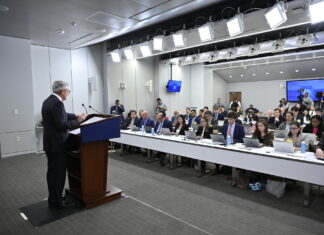Nonbank Lending
In their recent working paper "Nonbank Lending", economists Sergey Chernenko, Isil Erel, and Robert Prilmeier provided an insightful overview of the sources and terms of private debt financing during the post-crisis period.
How to use the Fed’s FIMA Repo — the case of Hong Kong
Hong Kong Monetary Authority, the de facto central bank of Hong Kong, announced on April 22 that it will utilize the Fed's FIMA Repo facility to borrow USD 10 billion of cash.
What is the Saturated Level of Reserves?
The Saturated Level of Reserves or efficient level of reserves, is the point which the opportunity cost for banks to hold reserves disappears, and became indifferent towards holding more reserves. The reserve demand curve beyond this point becomes close to horizontal.
IMF Growth Projections and Overfitting in Judgment-based Economic Forecasts
In a recent IMF working paper "Overfitting in Judgment-based Economic Forecasts: The Case of IMF Growth Projections", economist Klaus-Peter Hellwig examined IMF's World Economic Forecasts (WEO) and check if the forecast model suffer from the problem of overfitting.
Why Fed projects to cut rates next year even it expects failure to reach...
Inflation projections by Fed officials show that PCE inflation will not reach 2% by the end of 2025. Why the Fed expects to cut rate next year then?
What is Hysteresis?
Hysteresis is referred to the hypothesis that recessions may have permanent effects on the level of output relative to trend.
100% Reserve System is coming? – The Swiss Sovereign Money Referendum
The Swiss sovereign-money referendum, also known as the Sovereign-Money Initiative, which aims to creates a safe and crisis-free, yet experimental, banking system in Switzerland will be held on 10th June.
The Non‐Bank Credit Cycle
In a new working paper "The Non‐Bank Credit Cycle", researchers Esti Kemp, René van Stralen, Alexandros Vardoulakis, and Peter Wierts tried to look into the cyclical properties of non‐bank credit and its relevance for financial stability.
Is tipflation even part of inflation?
Or, to frame the question in a more technical way: is tipflation even counted as part of Consumer Price Index (CPI) inflation?
Economic benefit of asset market bubble
What the impact of asset price bubbles on US economic growth is.

















